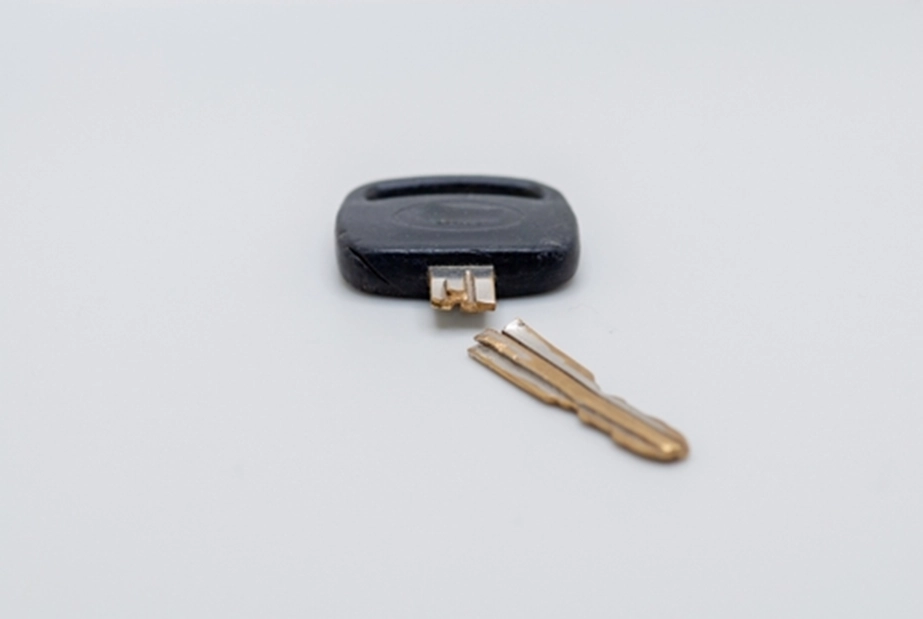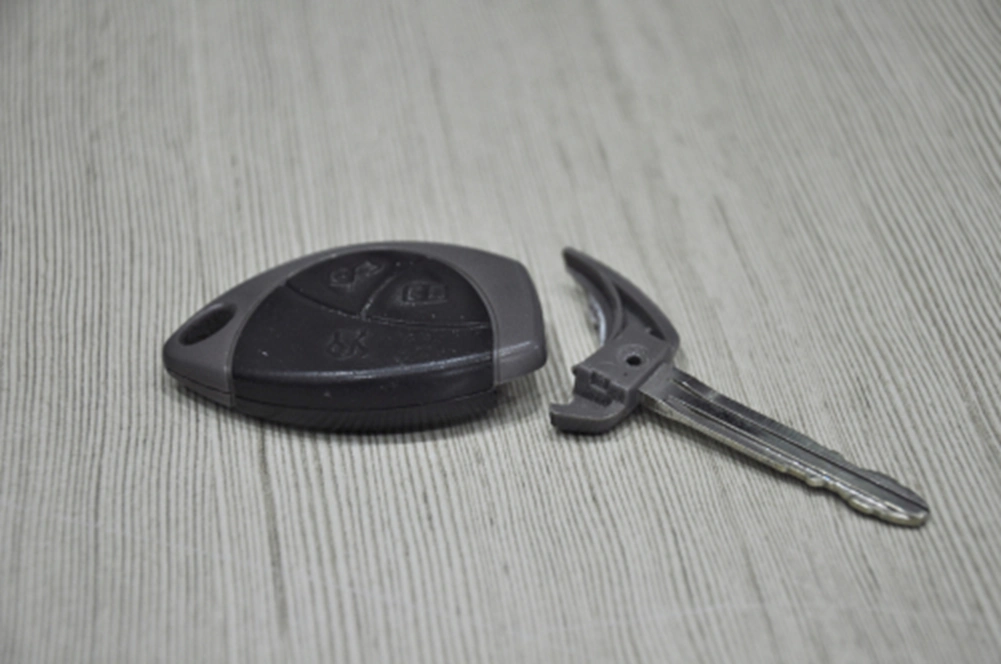What to Do if Your Car Key Snaps (Key Broken in Door)
It’s the kind of bad luck that always seems to strike at the worst moment; you’re running late, it’s raining, you rush to your car, and snap… your car key breaks in the door. As frustrating as it is, you’re not alone, and thankfully, there are practical steps you can take to get back on the road without making things worse. In this guide, we’ll walk you through what to do next, how to safely remove broken key from car door, and how to avoid ending up in this awkward situation again.

Common Reasons Car Keys Snap or Get Stuck
Car keys may seem sturdy, but they’re not indestructible. A variety of everyday issues can cause them to snap or get jammed in the lock. One of the most common culprits is simple wear and tear; over time, the metal weakens through repeated use if the key is bent, cracked, or poorly cut. Cold weather, rusted locks, and dirt build-up can also increase resistance in the mechanism, making it easier for the possibility of a car key stuck in lock or snapping under pressure.
Using the wrong key, or one that ‘almost fits’, can also cause stress on both the key and the lock. Forcing a reluctant key to turn in a stiff or misaligned door lock often leads to breakage. In short, a combination of tired metal, poor maintenance, and bad timing is usually to blame.
What to Do Immediately if Your Key Breaks
If your car key breaks in the door, stay calm. Panicking or forcing it further can make the situation worse. Here are a few simple steps on how to handle the situation:
- Assess the Situation: First, assess whether part of the key is still sticking out of the lock. If so, avoid touching it and do not attempt to unlock or wiggle the door further. Trying to force the broken piece could push it deeper or damage the lock mechanism entirely.
- Ensure your Vehicle is in a Safe Location: If you’re in a busy area or obstructing traffic, it may be worth calling roadside assistance for help. If you’re confident and have tools on hand, you can attempt removal yourself. If not, calling an emergency locksmith is often the safest and most efficient route.
Snapped in the Ignition
When a key breaks off in the ignition, the situation becomes a bit more delicate. Ignition systems are more sensitive and expensive to repair than door locks, so forcing out the broken piece could lead to costly damage. If the key fragment is lodged too deeply or won’t budge, it’s best to call a specialist locksmith with experience in automotive ignition systems.
Tip: Avoid attempting to start the vehicle or insert another key, as this could cause further damage. Do not remove broken key from car door by yourself. A locksmith can help remove the key without needing to replace the entire ignition.
Snapped in the Car Door
When your key snaps in the door lock, the first step is to avoid turning or forcing it any further, as this can push the broken piece deeper and damage the lock cylinder. If part of the key is still protruding, you might be able to gently pull it out using needle-nose pliers or a broken key extractor tool. If the fragment is flush or fully inside the lock, it is advisable to call out a locksmith to safely remove it without compromising the locking mechanism.
Can You Remove a Broken Key Yourself?
Yes, in some cases, you can remove a broken key yourself if a portion of the key is still visible outside the lock. Tools like needle-nose pliers, tweezers, or broken key extractors can be used to carefully grip and pull the piece out. It’s important to keep a steady hand and avoid applying too much force, which could damage the lock or push the key in deeper.
However, if the key fragment is lodged completely inside or the lock is tight or corroded, DIY removal becomes more difficult and risky. Lubricating the lock with graphite or silicone spray can help. Never use oil-based products, as they can attract dirt and worsen the issue.
Fun Fact: While it may seem a metal key could be retrieved by using a magnet, this won’t yield success; car keys are typically made of non-magnetic metals, such as brass or a brass-nickel alloy, which unfortunately won’t respond to a magnet at all.
When to Call an Auto Locksmith
If your attempts aren’t working or you’re unsure, calling on an expert is often safer and can prevent a simple problem from escalating into a costly repair. Professionals have the proper tools and experience for car key extraction without damaging your vehicle’s lock or ignition system. This is important for modern cars with transponder chips or electronic key systems, where improper handling could lead to further issues or expensive repairs.
If you’re ever stranded without a spare key or if the lock itself seems damaged or worn, contacting an auto locksmith is a top go-to solution. In many cases, locksmiths can provide on-site key cutting and reprogramming, saving you the hassle of towing your car to a dealership. When in doubt, it’s best to seek expert help to avoid turning a frustrating moment into a major setback.
How a Locksmith Extracts a Broken Key
A professional auto locksmith uses specialised tools and techniques to safely remove a broken key without damaging the lock or ignition. They typically start by inspecting the key’s position using a flashlight and fine tools to assess how deeply the fragment is lodged. If part of the key is visible, they may use a broken key extractor hook to gently slide it out.
For more stubborn cases, the locksmith might apply a non-damaging lubricant and use precision picks or mini tweezers to grip and remove the fragment from within the lock cylinder. In some situations, they may need to partially disassemble the lock to access the key without causing harm. Once the key is removed, they can often cut and program a replacement key on-site to get you back on the road.
Options for Replacing a Broken Car Key
Once your broken key is removed, the next step is choosing the best car key replacement option. If you have a basic mechanical key, a locksmith can usually cut a new one quickly using the broken pieces or your vehicle’s key code. For more advanced keys, like transponder, remote, or smart keys, you’ll likely need reprogramming, which some locksmiths can handle on-site, or you may need to visit your dealership.
It’s also worth checking if your car insurance or breakdown cover includes lost or broken key replacement, as this can help reduce costs. Be sure to have your vehicle’s VIN, registration, and personal ID handy, as these are often required for security and verification purposes. Whichever route you take, getting a spare key made at the same time is a smart way to avoid future inconvenience.
Pro Tip: For peace of mind and an additional layer of security in the case of a key breaking, consider installing Ghost Immobilisers, which use encryption technology and smartphone pairing via an app to protect cars with manual or keyless entry.
How to Prevent Car Keys From Snapping in Future
Avoiding a broken key starts with simple habits and regular maintenance. Always insert and turn your key gently, as forcing it into a stiff lock or turning it too hard can put stress on the metal. If you notice your key is bent, cracked, or showing signs of wear, replace it before it breaks unexpectedly.
Also keep your locks clean and lubricated with graphite or silicone spray to reduce resistance. Never use your key as a tool for prying or opening packages, as this weakens its structure over time. If your lock ever feels sticky or your key is hard to turn, get it checked – ignoring small issues is often what leads to the snap.
FAQs
What to do if a key is snapped?
If your car key snaps, stay calm and avoid forcing the remaining piece as this could damage the lock further. First, check if part of the key is still visible and try to gently remove it using needle-nose pliers or a key extractor tool. If the fragment is stuck deep inside the lock or ignition, it’s best to call a professional auto locksmith to safely extract the broken key and provide a replacement.
How to extract a snapped car key?
To extract a snapped car key, first check if any part of the key is sticking out of the lock. If it is, try gently pulling it out using needle-nose pliers or a broken key extractor tool. If the key is fully lodged inside or difficult to reach, avoid forcing it and contact an auto locksmith to safely remove it without damaging the lock or ignition.
Why do car keys snap?
Car keys can snap due to metal fatigue from regular use, particularly if the key is bent, worn, or cracked. Using excessive force to turn a stiff or sticky lock can also cause the key to break. Additionally, environmental factors like rust, dirt build-up, and cold weather can increase resistance in the lock, making keys more prone to snapping.
Can a locksmith help?
Yes, a professional locksmith can help and is often the best option when dealing with a snapped car key. They have specialised tools and expertise to safely extract broken keys from locks or ignitions without causing damage. Many locksmiths can also cut and program replacement keys on-site, helping you get back on the road quickly and without the high costs of a de
Share


